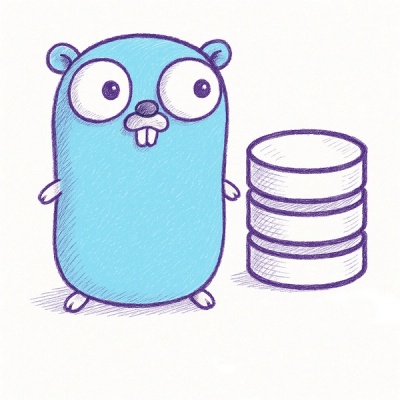
Security News
Browserslist-rs Gets Major Refactor, Cutting Binary Size by Over 1MB
Browserslist-rs now uses static data to reduce binary size by over 1MB, improving memory use and performance for Rust-based frontend tools.
camera-processor
Advanced tools
A Simple to Use Webcam Filter Framework.
$ npm install camera-processor
@camera-processor/virtual-background - Easy-to-use background masking.
More coming in the future...
Frame Analyzers take frames from your camera and asynchronously give back some information about them that your app and Frame Renderers can use.
Frame Renderers take the information given to them by the Frame Analyzers and use Render Modes to draw things on top of the camera.
Render Modes give you a canvas and a canvas context that Frame Renderers can use to draw. There are 2 Render Modes that come with this library - _2DRenderMode and WebGLRenderMode (Unfinished).
The Camera Processor is the main component of this library. It combines the Frame Analyzers with the Frame Renderers and a frame loop.
import CameraProcessor from 'camera-processor';
const camera_processor = new CameraProcessor();
camera_processor.setCameraStream(camera_stream); // Set the camera stream from somewhere
camera_processor.start(); // You have to explicitly start it after setCameraStream
// Add some analyzer (the first argument is the name and it's very important)
const some_analyzer = camera_processor.addAnalyzer('some_analyzer', new SomeAnalyzer());
// Add some renderer that might or might not use data from the analyzers
const some_renderer = camera_processor.addRenderer(new SomeRenderer());
const output_stream = camera_processor.getOutputStream(); // Get the output stream and use it
// Get the data for the last frame from all analyzers
const analyzer_data = camera_processor.analyzer.data;
// This object has a key for every name you used with addAnalyzer
// And the value of this key is the data for the last frame returned by that analyzer
console.log(analyzer_data);
// > { some_analyzer: ... }
console.log(camera_processor.performance);
// > {
// fps: ...,
// frameTime: {
// analyze: ...,
// render: ...,
// total: ...
// }
// }
camera_processor.setPerformanceOptions({
useTimeWorker: true, // Schedule callbacks in a worker to stop camera-processor from being throttled after minimizing tab
useIdle: false, // use requestIdleCallback if available (false by default)
everyNFrames: 2, // Run every n frames and skip the others (1 by default - run every frame)
idealFPS: 30 // Your ideal FPS (Only works with TimeWorker)
});
// *requestIdleCallback - https://developer.mozilla.org/en-US/docs/Web/API/Window/requestIdleCallback
// Stop all analyzers and renderers and just pass the camera stream through the output stream
camera_processor.passthrough = true;
camera_processor.start(); // Start/Resume (has to be called explicitly in the beginning)
camera_processor.stop(); // Stop/Pause (also freezes the camera through the output stream)
// Use passthrough mode if you just want to stop all renderers and analyzers
// All analyzers and renderers have the same start/stop methods
// to start and stop them individually but unlike the CameraProcessor
// they're are started by default
some_analyzer.start();
some_renderer.stop();
// Check if the CameraProcessor or any analyzer/renderer is running
console.log(camera_processor.isRunning);
console.log(some_analyzer.isRunning);
// Free the camera stream when you know you won't use it again
// This function loses the reference to the stream.
// It takes in one parameter - destroy (false by default)
// If destroy is true, the camera stream and all it's tracks
// will be stopped and removed.
camera_processor.freeCameraStream(true);
type AnalyzerData = { some_analyzer: SomeType };
// This will give you special typing for the camera_processor.analyzer.data
const camera_processor = new CameraProcessor<AnalyzerData>();
CameraProcessor will automatically pause (not stop) to save performance when there are no output tracks active. Restrain from using stream.clone() or track.clone() because the new cloned tracks can't and won't count as active.
Safari is currently not supported.
import { FrameAnalyzer } from 'camera-processor';
class SomeAnalyzer extends FrameAnalyzer {
async analyze(camera_video, camera_processor) {
// Do something with camera_video
return some_data;
}
}
// camera_processor.addAnalyzer('some_analyzer', new SomeAnalyzer());
import { FrameRenderer, RENDER_MODE } from 'camera-processor';
// Check 'Using The Camera Renderer' below for more details on 'renderer' and 'RENDER_MODE'
class SomeRenderer extends FrameRenderer {
render(analyzer_data, camera_video, renderer, camera_processor) {
renderer.use(RENDER_MODE._2D); // Switch to the specified Render Mode (always do this at the start)
renderer.ctx.fillStyle = 'green';
renderer.ctx.fillRect(0, 0, renderer.width, renderer.height);
}
}
// camera_processor.addRenderer(new SomeRenderer());
// In the render method of a FrameRenderer you have access to the CameraRenderer (renderer)
renderer.use(RENDER_MODE._2D); // Switch to that canvas and canvas context
// Note: A FrameRenderer can use multiple different RenderModes one after another and the image will
// be copied from the previous one to the next so that you can make incremental changes to the image
// by rendering transparent things on top of it.
renderer.canvas; // Access the current RenderMode's canvas
renderer.ctx; // Access the current RenderMode's canvas context
renderer.width; // Access the camera's width
renderer.height; // Access the camera's height
RENDER_MODE is an enum that allows you to specify what kind of canvas context you want to use.
RENDER_MODE._2D will use a 2d canvas.
RENDER_MODE.WebGL will use a webgl2/webgl canvas. (Unfinished)
FAQs
A Simple to Use Webcam Filter Framework.
We found that camera-processor demonstrated a not healthy version release cadence and project activity because the last version was released a year ago. It has 1 open source maintainer collaborating on the project.
Did you know?

Socket for GitHub automatically highlights issues in each pull request and monitors the health of all your open source dependencies. Discover the contents of your packages and block harmful activity before you install or update your dependencies.

Security News
Browserslist-rs now uses static data to reduce binary size by over 1MB, improving memory use and performance for Rust-based frontend tools.

Research
Security News
Eight new malicious Firefox extensions impersonate games, steal OAuth tokens, hijack sessions, and exploit browser permissions to spy on users.

Security News
The official Go SDK for the Model Context Protocol is in development, with a stable, production-ready release expected by August 2025.